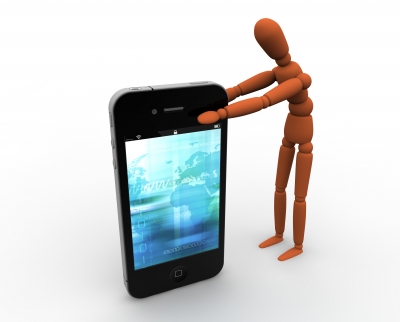-
- 08
Mar - (0)
SmartPhone Security and Mental Health Confidentiality
Perhaps I have been proven wrong…
Recently I looked into SmartPhones in medical use, and commented that I felt the applications were not ready for prime time due in part to questionable security (passwords and a secure connection). If it was my mental health data being broadcast across the planet, I’d want to be sure that the distance between the server and the SmartPhone being used by the professional helping me was a secure connection, and my confidential healthcare data would not be intercepted by somebody else.

Well, the proof arrived from Andrew Isham, the director of development for A-CHESS. That’s the SmartPhone app being developed for treatment facilities by the University of Wisconsin. Data coming from and going to the fileserver, whether it’s from a workstation with a secure network, internet connection or SmartPhone, is forced to a login page that sets up the VeriSign security certificate, assuring data encryption. VeriSign is an old hand at this sort of work. I’m not a real tech nurd, however I am pretty tech-savvy, and the explanation satisfied me that the security concern I mentioned in conjunction with SmartPhone connections is no cause for anxiety attacks. All is well. Breathe.
I heard on the radio (one of the wonderful news programs on National Public Radio (NPR) that SmartPhone app development is the fastest growing segment for jobs in the tech industry and looked into it. It turns out that it’s so popular that the traditionally required experience and education is being ignored in the search for people to do this sort of work for software companies. It’s a big deal. My marketing and sales background tells me that even though we’ve seen this sector grow with leaps and bounds lately, we are at the tip of the iceberg.
The question of how appropriate EHR products are to deploy on the SmartPhone and other hand-held devices has come to my attention for a number of years. At least 20% of the organizations I’ve talked with over the past 5 years have a professional on staff who asks about this technology. A friend of mine who runs a mental health and addictions treatment oversight agency has been so serious about using hand-held devices for EHR purposes he developed his own application for this purpose years ago. He was ahead of his time, and I’m certain he’s happy to see this trend.
As I implied above, a commercially viable SmartPhone product needs to synchronize with an agency’s EHR housed on a server. That way the data is available to others treating the consumer, provided the consumer has signed off a Release of Information for them to see the treatment documentation. ACHESS is the product closest to deployment I’ve seen, and most professionals in this business are not likely to develop their own apps like my friend mentioned above. I predict a well-researched app for SmartPhones could be a small part of an enterprise EHR system that will make or break system sales to new agencies very soon. Now that I know security is not a problem, I’m eager to see how they work in scheduling appointments and collaborative development of assessments, treatment planning and progress notes with consumers.
Let me know if you see any mental health and addictions treatment EHR’s that have this sort of functionality working for professionals and consumers in the field. I, for one, am very happy to see some movement in this direction; and my interest was prompted by the silliest thing: learning to send text messages to my kids on my SmartPhone.
- 08

Leave a Reply